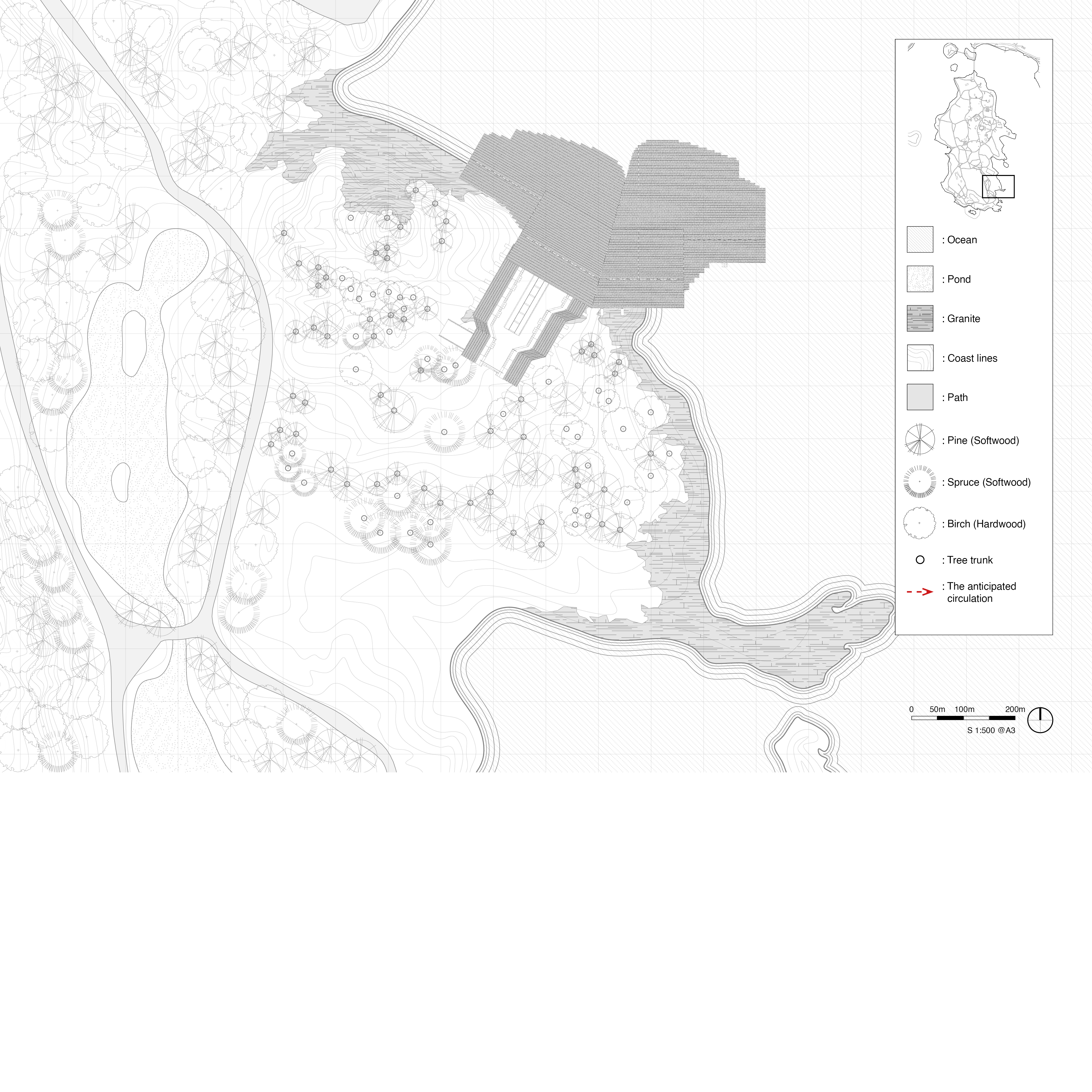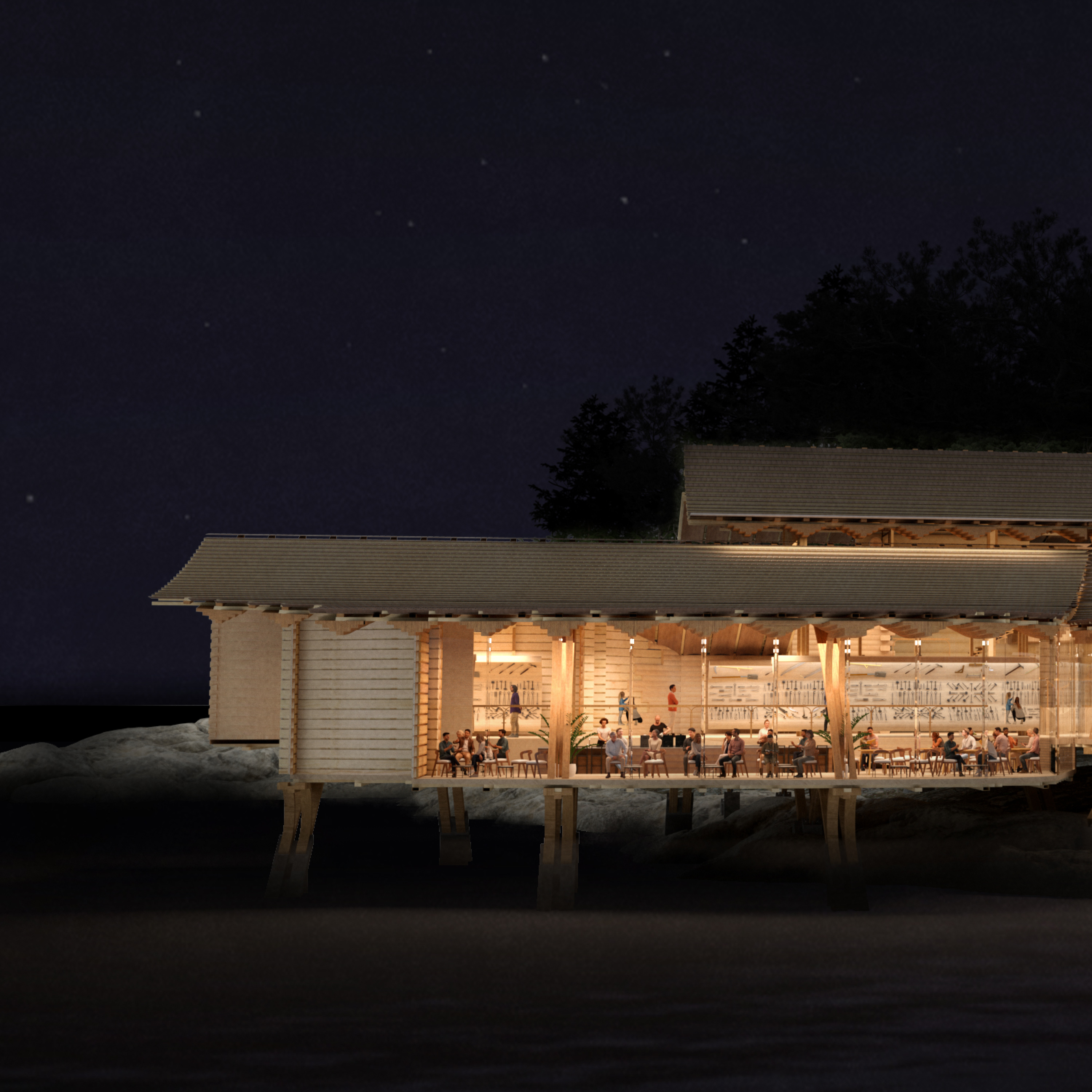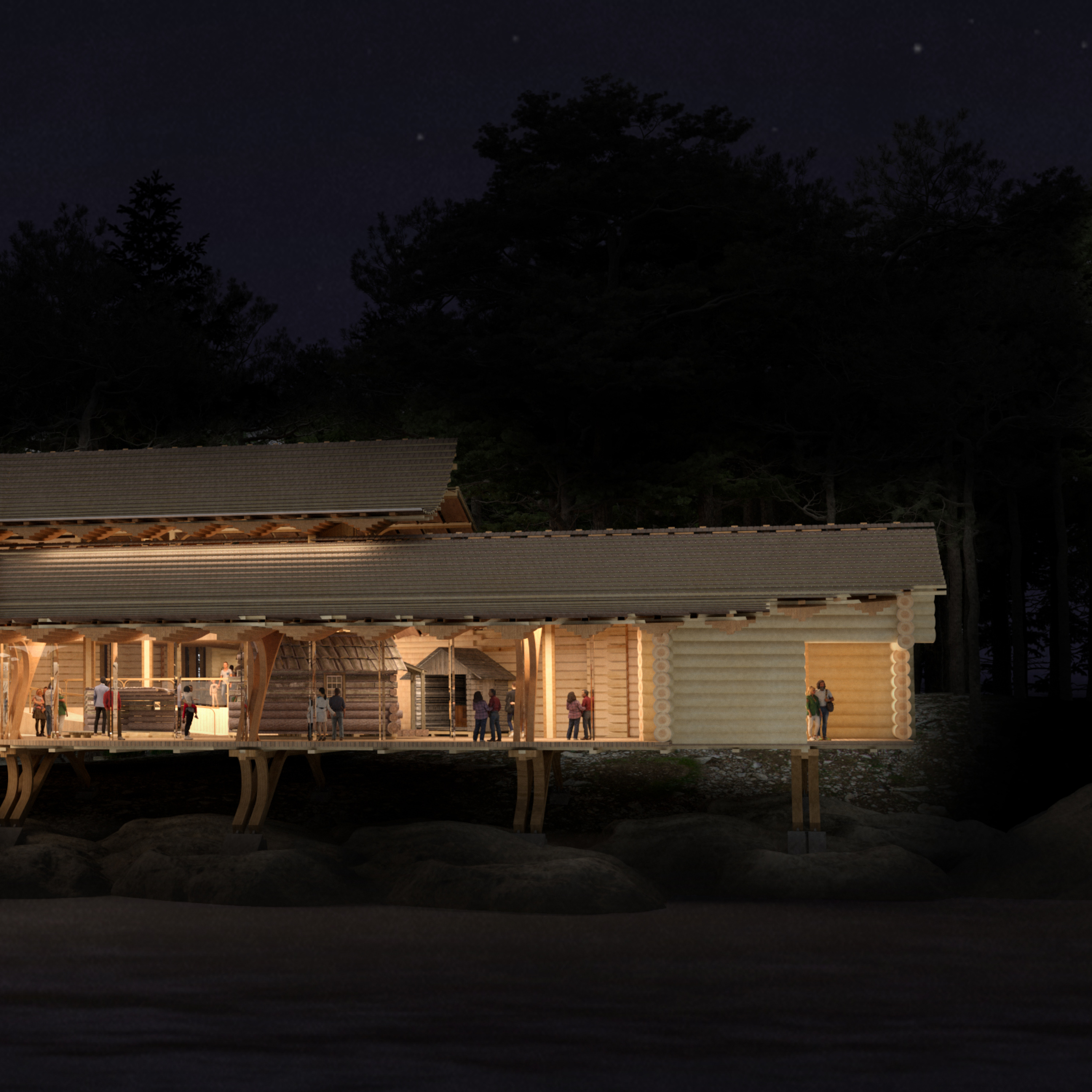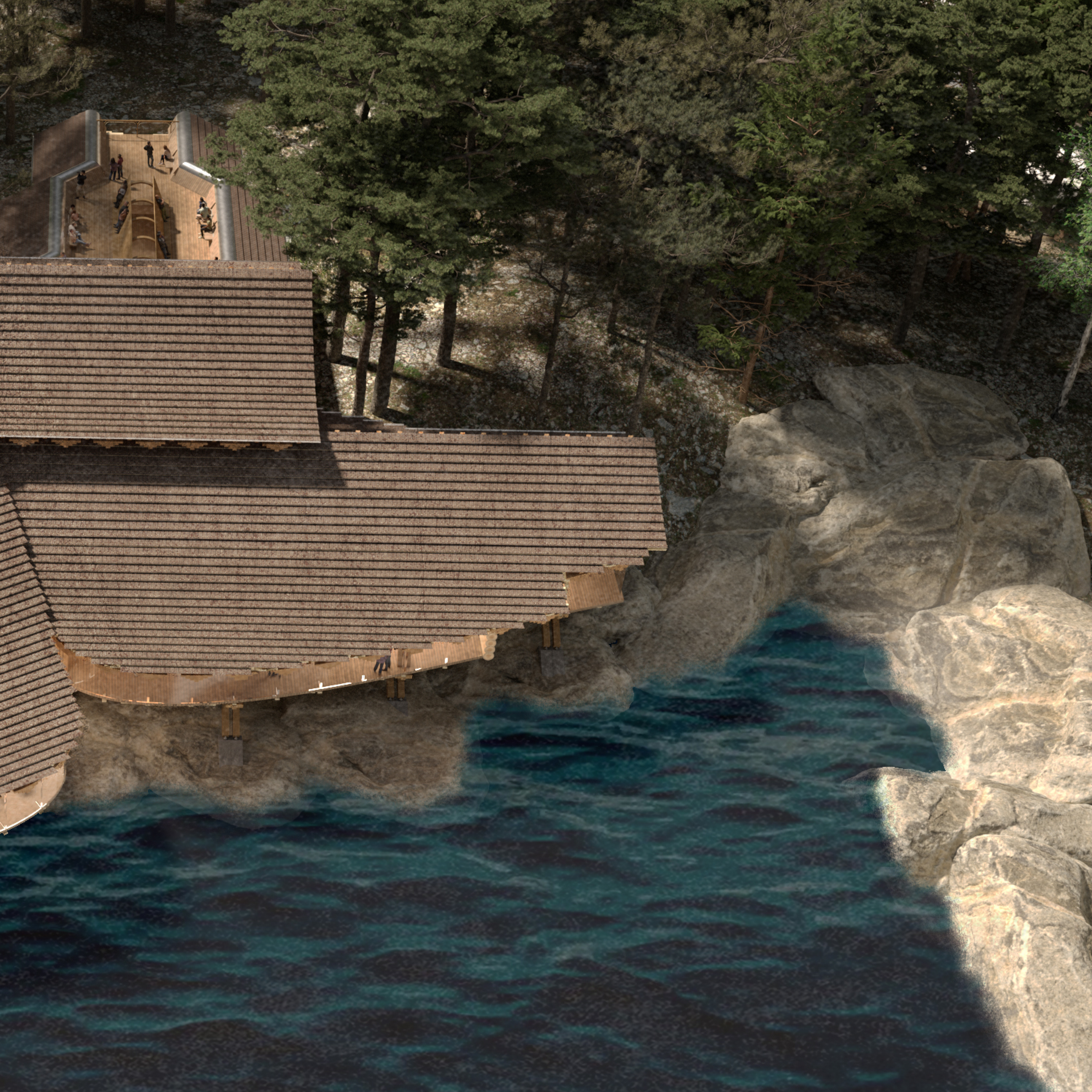FRAMING THE HORIZON: STRUCTURAL GLAZING IN SEASIDE ARCHITECTURE
The design intention is to implement structural glazing on the seaside façade, enabling uninterrupted visual access to the sea’s horizon and the urban skyline of Helsinki. This glazing system not only enhances spatial transparency and visual openness but also serves as an integral structural element, providing both aesthetic clarity and architectural stability to the façade.
DESIGNING FOR DARKNESS: NATURAL MATERIALS AND LIGHT IN THE NORDIC CONTEXT
The museum is located in the Seurasaari Open-Air Museum in Helsinki, Finland—a region known for its long, dark winters due to its northern location. During these months, the sun stays low and sets early, and the surrounding forest adds to the dimness. To counter this, the museum uses indirect lighting that reflects off the timber-lined interior, creating a warm and inviting atmosphere for visitors despite the limited natural light.
TOPOGRAPHIC DIALOGUES: NAVIGATING FOREST GROUND, GRANITE SHORES, AND MARINE EDGES
Given the project's context across coastal waters, granite formations, and forested landscapes, each site presents a distinct and ecologically diverse terrain. A key thematic concern of the project is the manner in which it engages with and responds to the specific conditions of the forest ground, granite coastline, and marine environment.
STRUCTURAL HYBRIDITY: GLULAM EXPERIMENTS IN RECLAIMED TIMBER
This project explores the feasibility of transforming reclaimed timber into structural log forms through glulam manufacturing. It investigates a hybrid approach by combining pine and oak to create an expressive and durable material system.
Pine is used in the glulam reclaimed log forms, while oak—known for its strength and durability as a hardwood—is employed in the glulam bending structure that shapes both the exterior and roof. The resulting system demonstrates a distinctive material relationship, where softwood and hardwood complement each other both visually and structurally.
By hybridising different wood species, the project enhances the aesthetic and performance qualities of timber. The oak glulam elements provide structural precision and resilience, supporting the more expressive pine log forms. This interplay illustrates how reclaimed and re-engineered wood can be creatively reimagined through contemporary fabrication techniques.
Scale 1:5
WHEN TIMBER MEETS WATER: A BENDING METAL SOLUTION
The glulam-bending timber structure cannot be submerged in water; therefore, a metal frame is required. To maintain the bending design language, the metal frame has been deliberately bent. The concrete foundation anchors the metal footing, while the metal frame supports the glulam timber structure in the water.














